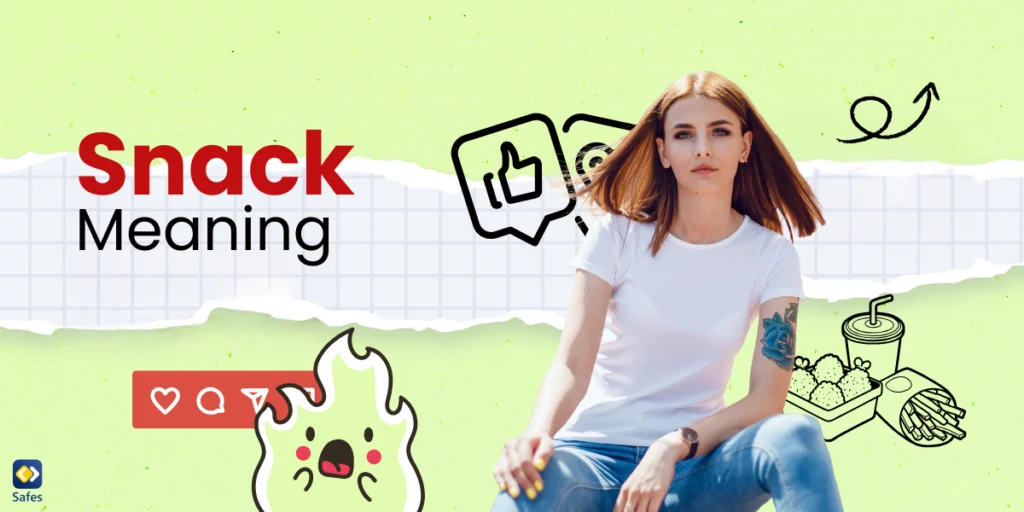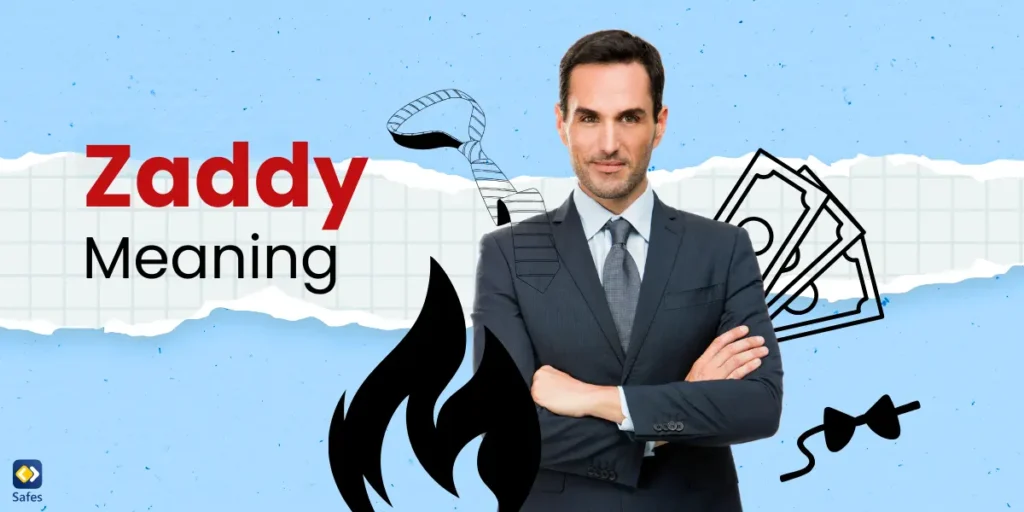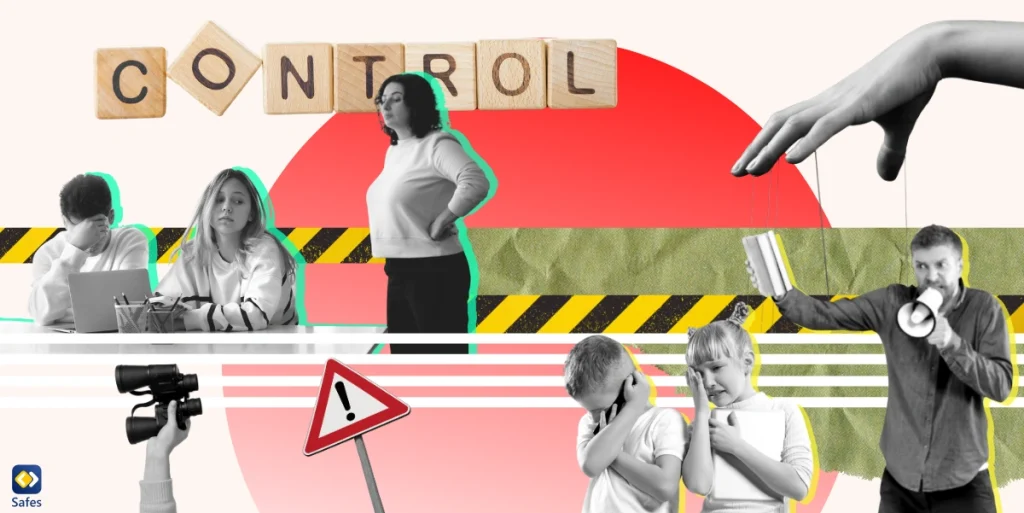If you’ve heard your child or their friends casually drop the word “snack” in conversation, you’re not alone, and no, they’re probably not talking about food. In today’s digital slang, snack has taken on a whole new meaning, and for many parents, it can be confusing (or even a little alarming) at first. So, what does “snack” mean in slang, and should you be concerned if your teen is using it or being called one? In this blog, we’ll break down the meaning behind calling someone a “snack,” how it’s used across platforms like TikTok and Discord, what tone it carries, and what you, as a parent, should know about its risks and relevance.
Download and Start Your Free Trial of the Safes Parental Control App
What Does It Mean When Someone Calls You a Snack?
If someone calls you a snack, they’re not talking about chips or cookies, they’re actually giving you a compliment. In slang, calling someone a “snack” means they find that person physically attractive, stylish, or generally appealing. Think of it as a playful way of saying someone looks good enough to eat (in a totally non-creepy, flirty kind of way). You might also see variations like “looking like a whole snack” or even “full-course meal,” which take the compliment up a notch. It’s a lighthearted term that’s often used on social media, especially in comments or captions hyping up someone’s appearance.

How It’s Used in Real Digital Interactions
Kids and teens often use “snack” casually in online conversations to compliment friends or celebrities. The tone is usually playful or flirty, and it’s often used in a fun, hype-up kind of way. For example, a teen might comment on a friend’s selfie with “Okayyy, you’re looking like a whole snack” or reply to a picture with fire emojis and “snack alert.” In group chats or Discord servers, someone might drop “he’s a snack fr” (meaning “for real”) while talking about a character in a game or a favorite actor. Depending on the context, it can also be used sarcastically, especially if the image or video is intentionally over-the-top.
Platform-Specific Usage
How teens use the slang “snack” can vary slightly across different platforms, depending on the tone, audience, and format:
TikTok
Users often pair the term “snack” with glow-up videos, outfit reveals, or playful lip-syncs. Captions like “when you realize you’re a whole snack” or “snack energy activated” are common, usually with upbeat or trending audio.
“Snack” shows up in comments under selfies, outfit posts, or Reels. Friends might write things like “absolute snack,” “serving snack vibes,” or drop emojis to signal the same message.
Snapchat
Used more casually in captions over selfies or short videos. A teen might snap a mirror pic with a line like “felt cute, snack mode today” or send it directly to a friend with a wink.
Discord
In group chats or fandom servers, “snack” might be used when talking about animated characters, avatars, or streamers. Example: “Why is this boss character lowkey a snack though?”
Gaming Chats (like in Fortnite, Roblox, or Valorant)
Sometimes used jokingly or sarcastically during gameplay. For example, after customizing a character: “Bro, my skin looks like a snack” or commenting on another player: “Dude came in here looking like a whole snack.”
Risk Level Indicator (Parent Alert System)
🟡 Yellow – Context matters; can be misused.
While “snack” is generally harmless and playful among teens, the meaning depends heavily on who’s saying it, how, and to whom. It’s usually just a fun compliment, but it can veer into uncomfortable or inappropriate territory if it’s used to objectify someone, especially across age groups or in flirty messages from strangers. Parents don’t need to panic, but it’s good to stay aware of the context.
Trend Tracker: Is It Still Relevant?
📉 Fading – was big, but is declining
While “snack” was a popular slang term in the late 2010s and early 2020s, its everyday use among teens is slowing down. It still pops up occasionally in comments or playful banter, but newer slang has taken the spotlight on platforms like TikTok and Discord. Kids today are more likely to use updated terms like “rizz,” “slay,” or “ate” to compliment someone’s appearance or vibe. So, while “snack” isn’t totally gone, it’s definitely past its peak.

Online Safety Considerations
While the term “snack” itself isn’t inherently harmful, its use can sometimes be linked to concerning online behaviors if taken out of context or used inappropriately. For example, if an adult or stranger uses “snack” to compliment a minor in a flirty or suggestive way, it could be a red flag. Additionally, in online gaming or social media spaces, it’s possible for kids to receive attention from individuals who misuse the term to make them feel uncomfortable or self-conscious. Parents should keep the following in mind to help keep their kids safe online:
- Encourage open communication: Make sure your child feels comfortable talking to you if someone online makes them feel uneasy, whether it’s through slang or direct messages.
- Educate about boundaries: Teach your kids about healthy online behavior and explain the difference between compliments and comments that feel inappropriate or uncomfortable.
- Monitor online interactions: Pay attention to the platforms your kids are using, and make sure they’re only interacting with people they know and trust.
- Set clear rules for online behavior: Establish guidelines for acceptable language, who they can interact with, and what kind of content is appropriate to post or share.
- Create safe spaces for them to ask questions: Let your kids know they can always come to you if they don’t understand something or if they receive an uncomfortable message.
Can Parental Controls Help?
Yes, parental controls can play a helpful role in ensuring your child’s safety online. With iPhone parental controls, parents can restrict access to certain apps, monitor social media interactions, and filter content. A parental control app like Safes, available on Android and iOS, can help you track your child’s online activity, including their social media use. It’s a useful tool to ensure that they’re not exposed to inappropriate interactions or online behavior. Having these tools in place, combined with regular conversations about digital boundaries, can give parents peace of mind while helping their children explore the online world safely.
Conclusion
In short, “snack” is a playful slang term used to compliment someone’s appearance, often saying they look attractive or appealing. While generally harmless, it can be misused or linked to inappropriate online behavior, especially when directed toward minors. Parents should stay involved in their kids’ online lives by educating them about digital boundaries, monitoring interactions, and keeping the lines of communication open. For added peace of mind, consider using a parental control app like Safes, to track and manage your child’s digital activity.
Your Child’s Online Safety Starts Here
Every parent today needs a solution to manage screen time and keep their child safe online.
Without the right tools, digital risks and excessive screen time can impact children's well-being. Safes helps parents set healthy boundaries, monitor activity, and protect kids from online dangers—all with an easy-to-use app.
Take control of your child’s digital world. Learn more about Safes or download the app to start your free trial today!




